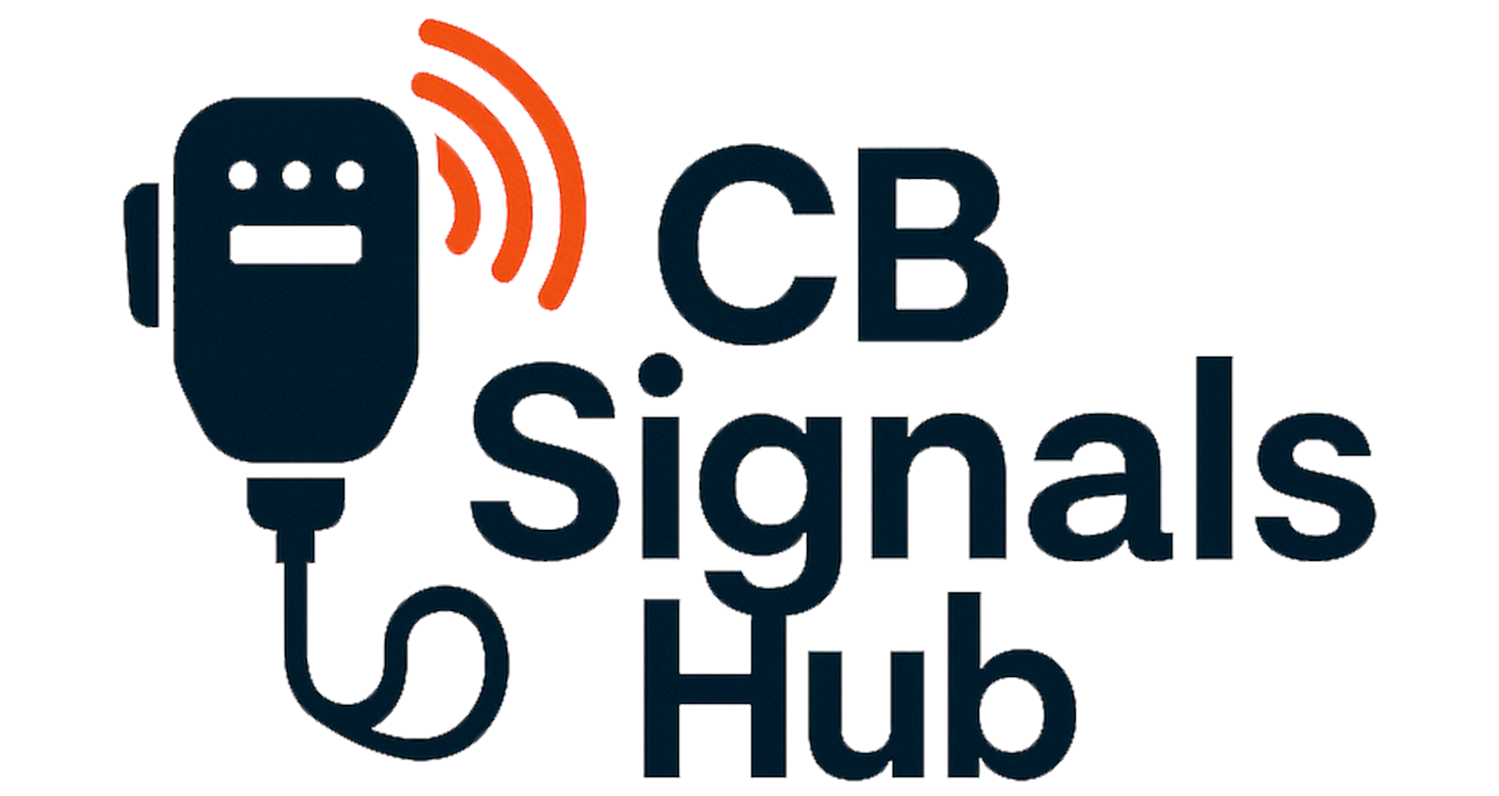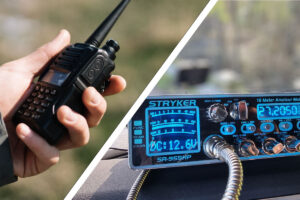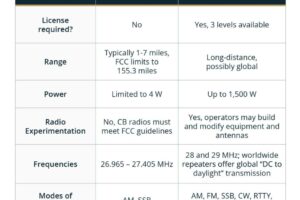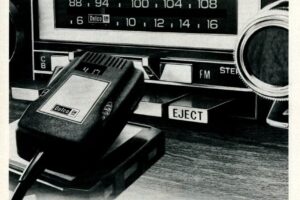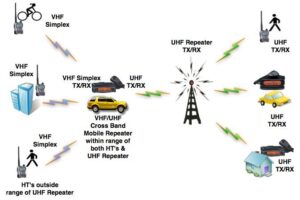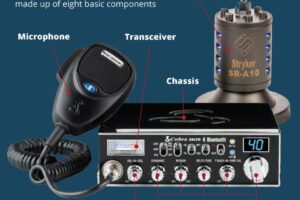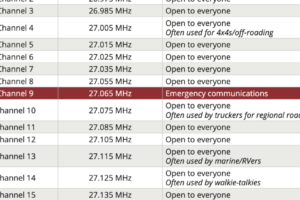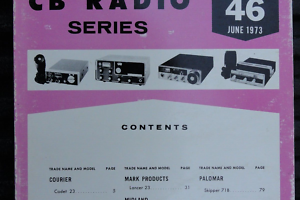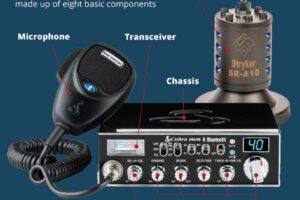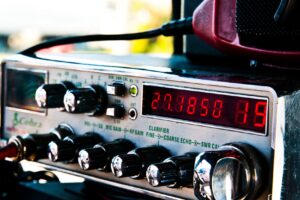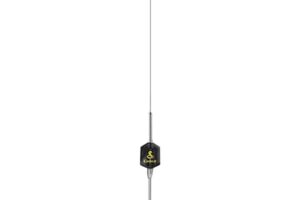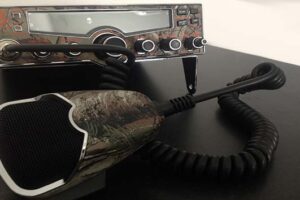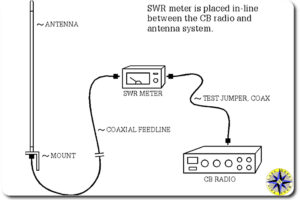How to Use a CB Radio for Beginners: A Step-by-Step Guide
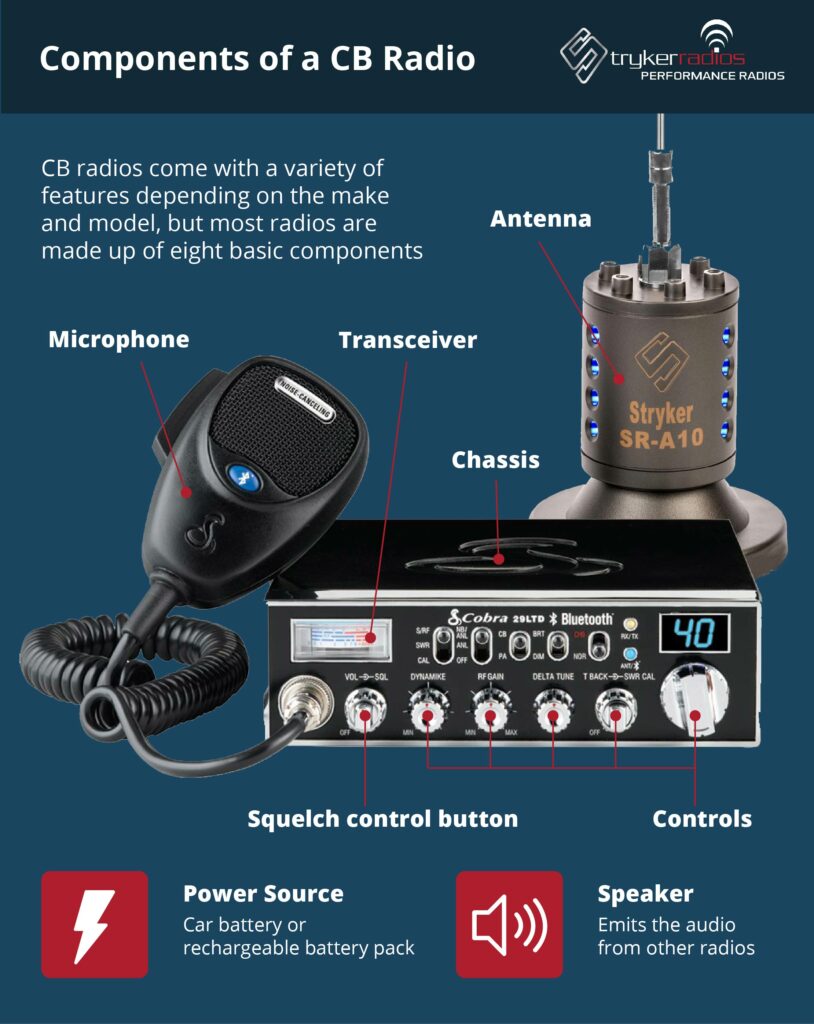
Using a CB radio can be fun and useful. It’s a great tool for communication.
CB radios, or Citizens Band radios, have been around for decades. They allow people to talk over short distances without needing a license. Truck drivers, hobbyists, and even families use them. If you are new to CB radios, don’t worry.
This guide will help you understand the basics. You will learn how to set up, use, and get the most out of your CB radio. Whether you want to join the CB community or just need it for emergencies, we have you covered. Let’s get started on this exciting journey into the world of CB radios.
Introduction To Cb Radio
CB Radio, or Citizens Band Radio, can be an exciting and practical tool for communication. Whether you’re a truck driver, a hobbyist, or someone who enjoys outdoor adventures, knowing how to use a CB radio can be incredibly useful. Let’s dive into the basics and get you started on your CB journey.
History Of Cb Radio
CB radio has been around since the 1940s. It gained popularity in the 1970s, particularly among truck drivers and road enthusiasts. This was a time when there were no cell phones, and the CB radio served as a lifeline for communication.
The CB radio’s heyday saw it becoming a cultural icon. Movies and songs of the era celebrated this form of communication. Over the years, its use has evolved, but the basic principles remain the same.
Benefits Of Using Cb Radio
There are several advantages to using a CB radio. One of the main benefits is that it does not rely on cell towers. This makes it a reliable form of communication in remote areas where mobile signals are weak or nonexistent.
Another benefit is the sense of community. When you use a CB radio, you can connect with other users for information, assistance, or just a friendly chat. This can be especially valuable during long road trips or when navigating through unfamiliar terrain.
CB radios are also user-friendly and affordable. Unlike some high-tech gadgets, they are easy to set up and operate. This makes them accessible to beginners and experienced users alike.
Have you ever been in a situation where you wished you had a reliable way to communicate? A CB radio can be that tool, providing peace of mind and connectivity.
So, are you ready to explore the world of CB radios? It’s a fun and practical skill to have, and it could make your travels or hobbies even more enjoyable.

Credit: www.amazon.com
Choosing Your Cb Radio
Choosing the right CB radio can feel overwhelming for beginners. But, it’s easier than you think. Start by understanding the types of CB radios available. Then, consider key factors to help you make the best choice.
Types Of Cb Radios
There are several types of CB radios. The most common are handheld, mobile, and base station radios.
Handheld CB radios are portable. You can carry them anywhere. They are small and battery-powered. Ideal for on-the-go use.
Mobile CB radios are installed in vehicles. They need a power source from the vehicle. Perfect for truckers or road trips.
Base station radios are for home or office use. They have the highest power and range. They need a direct power source. Best for fixed locations.
Factors To Consider
Several factors matter when choosing a CB radio. Think about your primary use. Will you use it on the road or at home?
Consider the power source. Handheld models use batteries. Mobile and base models need a direct power connection.
Check the radio’s range. Base station radios offer the longest range. Handheld radios have the shortest. Mobile radios fall in between.
Look at the radio’s features. Some have extra channels, weather alerts, or built-in SWR meters. Decide which features are important for you.
Finally, think about your budget. Prices vary widely. Set a budget and find the best radio within your range.
Setting Up Your CB Radio
Setting up your CB radio can be an exciting process. It is the first step to unlocking the world of communication. Beginners might find it a bit daunting. But with the right guidance, it can be straightforward.
Installing The Antenna
The antenna is crucial for your CB radio. First, choose a good location. It should be as high as possible and away from obstructions. This ensures better signal reception. Use a mounting bracket to secure it firmly. Check all connections are tight. Loose connections can cause poor performance.
Powering The Radio
Next, power your CB radio. You can use your vehicle’s battery or a power supply. For vehicle use, connect the power cable to the battery. Ensure the polarity is correct. Red is positive, black is negative. If using a power supply, check the voltage matches the radio’s requirements. Plug it in and switch it on. Your radio should light up and be ready to use.
Basic Operations
Understanding the basic operations of a CB radio is essential for beginners. These operations include turning the radio on and off, as well as adjusting the volume and squelch. Mastering these simple tasks will make your CB radio experience smoother and more enjoyable.
Turning On And Off
To turn on your CB radio, find the power switch. It is usually labeled “On/Off” or simply “Power.” Flip the switch to the “On” position. You should see lights on the display, indicating the radio is active.
To turn off the CB radio, flip the same switch to the “Off” position. The lights on the display will go out, showing the radio is off. Always turn off the radio when not in use to save battery power.
Adjusting Volume And Squelch
Once your CB radio is on, you need to adjust the volume. Locate the volume knob, often labeled “Volume” or “Vol.” Turn the knob clockwise to increase the volume. Turn it counterclockwise to decrease the volume. Set the volume to a comfortable level so you can hear transmissions clearly.
Squelch is another important control. It helps to filter out unwanted noise. Find the squelch knob, usually labeled “Squelch” or “SQL.” Turn the knob slowly until the background noise just disappears. This sets the squelch threshold, allowing you to hear only clear transmissions.
By mastering these basic operations, you can ensure a better CB radio experience. Practice turning the radio on and off, and adjusting the volume and squelch regularly. With time, these tasks will become second nature.
Understanding Channels
Understanding how to use a CB radio can seem tricky at first, especially when it comes to channels. But mastering the channels is essential to get the most out of your CB radio experience. Let’s break it down step by step so you can start communicating effectively and confidently.
Channel Frequencies
Each channel on a CB radio operates on a specific frequency. Knowing these frequencies can help you choose the right channel for your needs. For example, Channel 19, which operates at 27.185 MHz, is widely used by truckers for communication on the road.
To make it simple, think of channels as specific radio lanes. Each lane has its own frequency, and by tuning into that frequency, you can communicate with others on the same lane. Make sure your radio is set to the correct frequency to ensure clear communication.
Popular Channels
Some channels are more popular than others because they serve specific purposes. Channel 9, for instance, is reserved for emergency communication. If you’re in trouble, this is the channel to use. Always keep this in mind when you’re out and about with your CB radio.
Channel 19 is another popular one, mainly used by truck drivers to share information about road conditions, traffic, and more. If you’re driving long distances, tuning into Channel 19 can provide you with valuable real-time updates.
Exploring these popular channels can enhance your CB radio experience. You’ll not only stay informed but also feel connected to a broader community. What channels have you found most useful in your CB radio adventures?
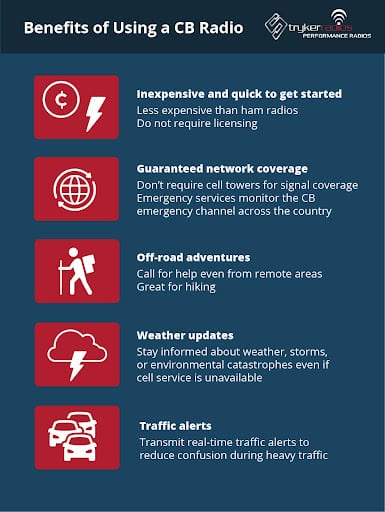
Credit: strykerradios.com
Using Cb Radio Lingo
Getting started with a CB radio can be thrilling. One of the most exciting parts is learning the lingo. Using the right terms can help you fit in and communicate effectively. Let’s dive into some common terms and the etiquette of using a CB radio.
Common Terms
CB radio lingo is unique and can be a bit overwhelming for beginners. But don’t worry! Here are some common terms you’ll hear:
- 10-4: Means “Message received.”
- Breaker: Used to start a transmission or interrupt someone.
- Bear: Refers to police officers.
- Smokey: A term for highway patrol officers.
- Good Buddy: A friendly term for another CB user.
Understanding these terms will help you communicate clearly and confidently. You might even impress your fellow CB users!
Radio Etiquette
Good etiquette is crucial for a pleasant experience on the CB radio. Here are some key points:
- Be Clear and Concise: Speak clearly and keep your messages short.
- Listen Before Speaking: Ensure the channel is clear before you start talking.
- Respect Others: Avoid using offensive language or interrupting ongoing conversations.
- Identify Yourself: Use your CB handle so others know who they’re talking to.
By following these guidelines, you’ll foster a respectful and enjoyable environment for everyone. It’s all about being considerate and making sure communication flows smoothly.
Have you ever tried using a CB radio? What was the most challenging part for you? Share your experiences and let’s learn together!
Troubleshooting
Learn how to use a CB radio with this beginner’s guide. Follow simple steps to set up and start communicating effectively.
When you start using a CB radio, troubleshooting is a crucial skill to ensure smooth communication. As a beginner, you might face some common issues that can be easily fixed with a bit of knowledge and patience. Let’s dive into some practical tips and insights on troubleshooting your CB radio.
Common Issues
It’s common to encounter problems like poor reception, interference, or no sound. These issues can be frustrating, but they are often simple to solve.
Sometimes, the microphone might not work properly. Ensure it’s securely connected and check for any damage.
Another frequent issue is a lack of power. Make sure your radio is properly connected to a power source and the fuse isn’t blown.
Fixing Reception Problems
Reception issues can stem from various factors. Here’s a quick guide to improving your reception:
First, check your antenna. It should be firmly connected and positioned correctly. A damaged antenna can severely affect reception.
Ensure your radio is tuned to the correct frequency. Double-check your settings to avoid any mistakes.

External interference can also play a role. Try moving your radio to a different location to see if the reception improves. Sometimes, a simple change in position can make a big difference.
Troubleshooting might seem overwhelming at first, but with these tips, you can quickly identify and solve common problems. Have you ever faced a tricky issue with your CB radio? How did you fix it? Share your experiences and insights to help others on their CB radio journey.
Safety Tips
Using a CB radio can be an exciting way to communicate, but safety is crucial. Whether you are new to CB radios or looking to refresh your knowledge, understanding safety tips is essential. This section will guide you through the basic safety measures to consider.
Legal Guidelines
Before using a CB radio, know the legal rules in your country. In the United States, the FCC regulates CB radio use. Ensure your radio is FCC-approved. Avoid using illegal amplifiers. These can interfere with other communications. Stick to the 40 designated channels for CB radios. Using other frequencies can lead to legal issues.
Emergency Communication
CB radios are valuable in emergencies. Channel 9 is the emergency channel. Use it to call for help. Keep messages short and clear. State your location and the nature of your emergency. Listen for responses. Do not use Channel 9 for regular conversations. This ensures the channel is free for real emergencies.
Frequently Asked Questions
What Are The Rules For Using A Cb Radio?
CB radio rules include using 40 channels, not exceeding 4 watts of power, no profane language, identifying yourself, and avoiding emergency channels.
What Are The 10 Codes For Cb?
10 codes for CB are: 1. 10-1: Receiving poorly. 2. 10-4: Message received. 3. 10-7: Out of service. 4. 10-9: Repeat message. 5. 10-20: Location. 6. 10-36: Correct time. 7. 10-33: Emergency. 8. 10-17: Urgent business. 9. 10-19: Return to base.
10. 10-23: Stand by.
What Channel Should I Set My Cb To?
Set your CB radio to channel 19 for highway use. Channel 9 is for emergencies. Check local guidelines for other channels.
How Do You Say Hello On Cb Radio?
On CB radio, say hello by using the phrase “Breaker one-nine” or “Breaker” followed by the channel number.
Conclusion
Mastering CB radio basics is simpler than you might think. Begin with understanding the controls. Practice tuning to clear channels. Listen before speaking to avoid interruptions. Keep messages brief and clear. Respect radio etiquette. Safety and communication go hand in hand.
Enjoy exploring CB radio communities. Share experiences with fellow users. Ask questions and learn more each day. Remember, practice makes perfect. Stay patient and curious. As you gain confidence, you’ll find CB radio rewarding. Enhance your skills with each use.
Enjoy the journey and keep communicating.
